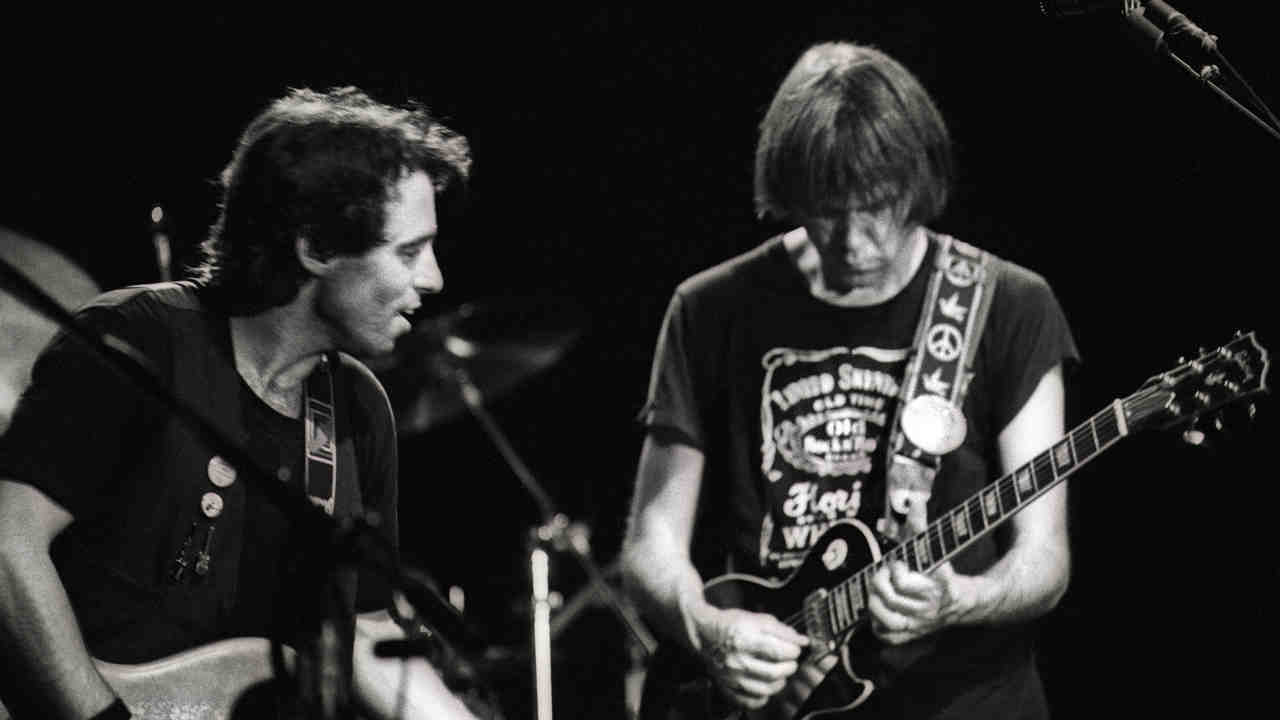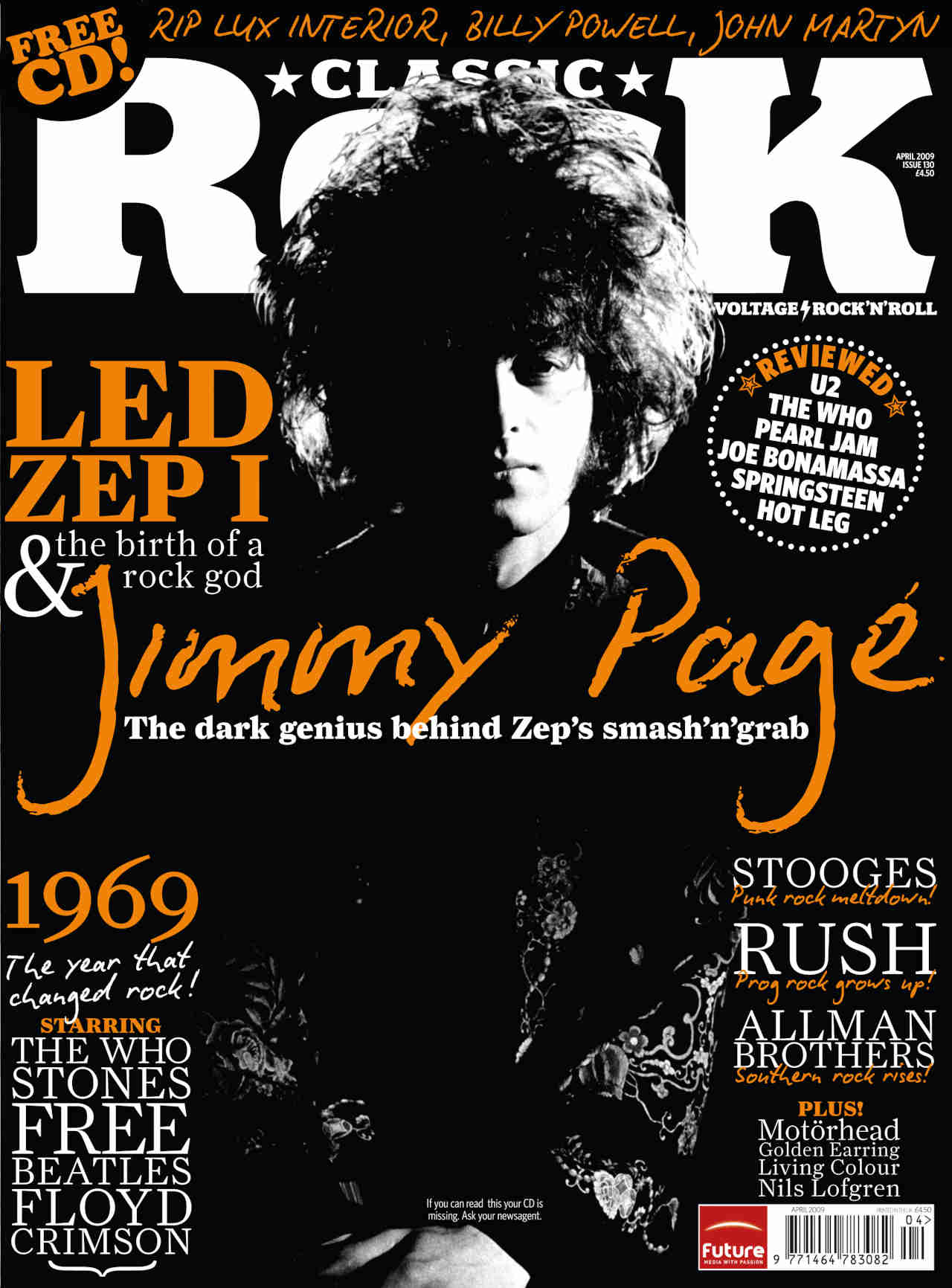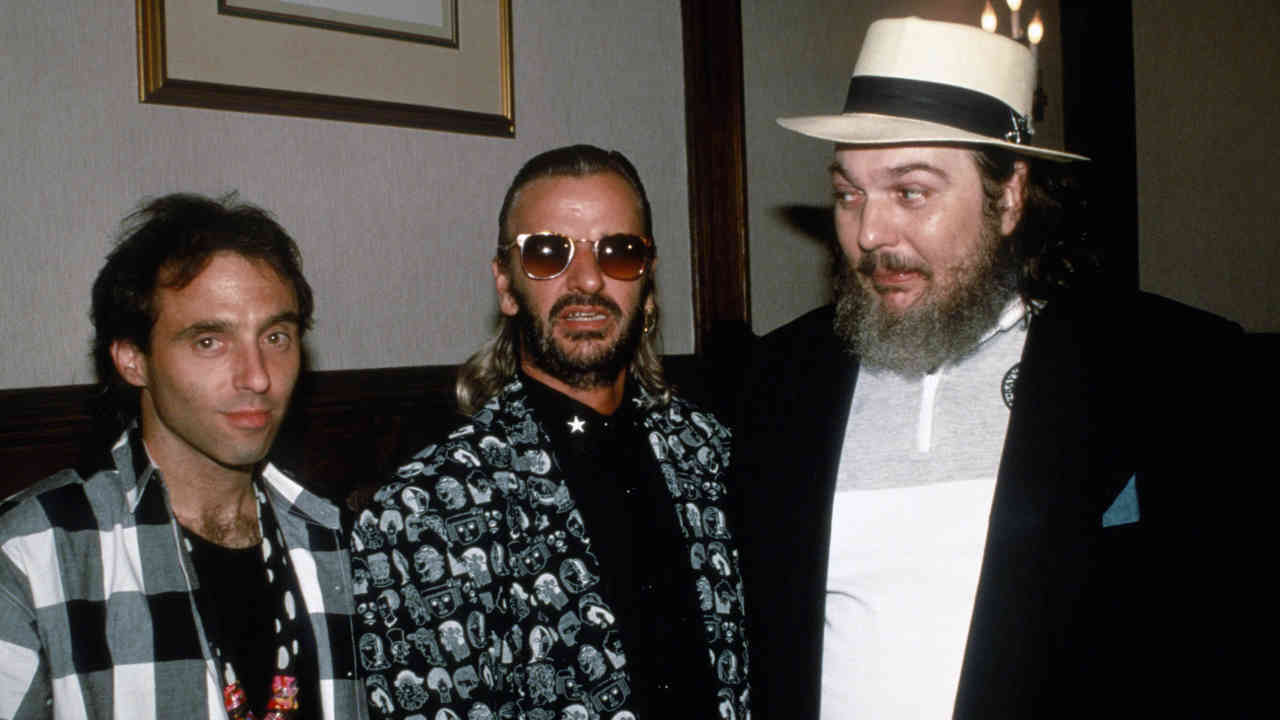
Nils Lofgren was just 18 when Neil Young came scouting for someone to play on his 1970 album After The Goldrush. Between then and now he’s fronted his own band Grin, played with some formidable names (he’s the only guitarist to back both Cab Calloway and Bart Simpson; no mean claim) and has been an integral part of Bruce Springsteen’s E Street Band since he joined in the 80s. “It wasn’t premeditated,” he told Classic Rock in this interview from 2009, in which he looked back at some of the musicians he‘d encountered, befriended and played with. “I just grew up to be a team player.”

Jimi Hendrix
I saw the Jimi Hendrix Experience play a lot and it was incredibly inspiring. I saw him for the first time at the Ambassador Theatre in Washington DC in 1967 and that’s what inspired me to try a career as a musician.
In 1970 Grin opened for the Experience in San Bernardino, Sacramento and Ventura. It was a life-altering experience. I even got the chance to knock on his Winnebago [motor home] door and chat to him; he had a big smile and was obviously stoned. I also managed to sneak backstage one time at the Baltimore Civic Centre. I had snuck into a doorway, and he came down a hallway all alone, on his way to the stage. I was just taken with how emaciated and sick he looked. He could tell I was a little startled by his appearance and he said: “Well, you know, I’m not feelin’ so great. My manager’s got me doing 64 shows in 65 days.”
It was so sad to me when he died, because it seemed like the most devastating death for a musician. He was my Number One guitarist.
Sly Stone
When I first got to New York City as a 17-year-old in 1968, I used to look up addresses of record companies in the phone book and go in looking for work. Once, I was being escorted off the premises at CBS when Sly Stone came down the hallway on a 10-speed bicycle. I explained I was homeless in the Village and was looking for work. He said: “Look, I’m having a big party at my apartment tonight. If you need a place to crash, come along.”
A few months later I was hanging out at the Fillmore East, where I climbed up into the lighting scaffold after the soundcheck. Suddenly, in the dark, I saw someone climbing up the rope ladder and coming all the way out to the middle and sitting next to me. To my amazement, it was Sly Stone. I don’t even know if he remembered me, but he was actually wondering if I might have any mescaline. People go to extraordinary lengths when they’re looking for a buzz.

Neil Young
Neil is a huge musical influence and mentor. One of the most exciting moments was the Tonight’s The Night tour in 1973. It was like a beautiful wake for Danny Whitten and Bruce Berry [Young’s guitarist and roadie, who died within months of each other from overdoses]. On the album itself we’d record everything live in the studio, while the band was still learning them. And Neil was brave enough to take it on the road. We were drinking tequila while we were making the record, then carried that on through the tour.
We’d do these amazing, crazy shows with 16-inch glitter boots tacked to the piano, and Neil screaming into the mic, really rapping. Meanwhile I’d be up on piano with ankle weights and combat boots, trying to keep myself grounded in some of the slower songs, playing with my teeth and pounding on the piano. There was a lot of crazy stuff going on. It was kind of pre-punk. The UK audiences hated it.
Danny Whitten

I got to be friends with Crazy Horse pretty early on, when I met Neil Young at the Cellar Door in Washington DC in ’68. We’d drive around LA together. Danny Whitten was a young, strong, surfer type with a great voice and great songs. By nature he wasn’t predisposed to being fragile and weak. But after a few years on the rock’n’roll road he overdid the drugs and it really started tearing him up physically and emotionally. He didn’t take good care of himself or seek the help he needed. And, sadly, he became one of the casualties.
After we made the first Crazy Horse album with Danny, he flew back to our farmhouse in the countryside in Maryland, the plan being he would be the fourth member of Grin. But when he was staying with us we came to realise just how sick he was. It was a shock to see one of my heroes fall apart at such a young age.
Bruce Springsteen
Somewhere in the late 70s I was living in LA and went to a Bruce show at the sports arena. His manager dragged me back to his dressing room, and it was the first time I realised how isolated and quiet Bruce likes to be before a show. He was just gathering his thoughts together. When the E Street Band needed a guitar player in 1984 I let Bruce know I was around. I was actually up at his home in New Jersey, visiting him for a couple of days. We spent a lot of time just sitting quietly at his home. He was a bachelor at the time, so we’d eat dinner, watch MTV and talk about music. When he asked me to join the band it was as monumental a gift as Neil Young calling and asking me to be on After The Goldrush. I got the job with Bruce about 30 days before the tour opened. By the twentieth show I suddenly didn’t feel like a rookie any more. It was a great thing to be a part of.
Lou Reed
Bob Ezrin was producing my album Nils [1979] and he’d asked if I minded co-writing. I had some great songs that needed better lyrics, so he suggested we go and see Lou Reed. So I ended up at Lou’s apartment on the Monday night of a big football game. The Washington Redskins were my team, but Lou loved the Dallas Cowboys, so we ended up with this ice-breaking evening where we were both completely invested in an NFL game, drinking and rooting for rival teams.
A month later I got a call at five in the morning. It was Lou: “Nils, I’ve been listening to your tape for three days and nights straight and I love it. And I’ve just completed 13 full sets of lyrics. Why don’t you get a pen and pencil and I’ll dictate them to you?” So I put on a pot of coffee, grabbed a notebook and pencil and sat on the phone for what was a long time while Lou dictated 13 finished songs to me. We ended up using four of them for Nils, and Lou used a few of them on his own record The Bells. Talk about a surprise phone call.
Cab Calloway
In the early 90s I was musical director for American comedienne Paula Poundstone’s TV show. One of our guests was Cab Calloway, who I think was 86 at the time. I was a huge fan of Cab’s. I think he kind of invented rap music in the 1930s. We recorded live in front of a studio audience. Cab was recovering from a broken hip and insisted on sitting in this kind of architectural draughting chair on wheels. It was pretty high up and didn’t seem very stable. He started doing his signature song, Minnie The Moocher, and the crowd was roaring. Cab started dancing around in the chair and, sure enough, he fell over in the middle of the song. Everyone was freaking out but the band kept playing. I stepped over and went to help him back up. He was lying there on his back, still singing. When he saw me he slapped me away from him: “Get the fuck outta here! Can’t you see I’m singin’?”

Ringo Starr
When I did the first two All-Starr Bands in 1989 and ’92 Ringo was like: “Look, I’ve got this massive thing called The Beatles, but I’m just a drummer. Yeah, it’s nice to be wealthy, but I need to go play.” I mean, how do you do that after you’ve been in The Beatles? But he found a way to do it. Ringo is as down-to-earth a musician as I’ve ever met in my life. I remember being on the road with him in Texas in 1989, and there was this giant mall where we went to lunch. Then we decided to see a movie. By the time we got there, there was a line of 80 to 100 people all wanting his autograph. But he sa t there and signed everything.
Jerry Lee Lewis
For his album Last Man Standing, I played pedal steel on Sweet Little Sixteen, which was hilarious in itself. I’m there in LA, recording with Jerry Lee Lewis and Ringo Starr, and when it comes to pedal steel players there’s about three thousand guys better than me! It was case of just shut up, take the gig and don’t tell them there are better players.
Keith Richards
Hendrix, Roy Buchanan and Jeff Beck were my three big heroes in the early days, but Keith Richards is the greatest at the thematic, three-note guitar thing. I used to walk around in the early days with pictures of Hendrix and Keith and put ’em up in the hotel rooms I’d be staying in.
I started meeting Keith backstage at Stones shows in the 80s. I was playing ping-pong one time and Keith was rushing by to do some big interview. He saw me, came running over, gave me a big hug and yelled at a photographer to take a picture. He took a couple of shots, and as Keith said goodbye and rushed off, he turned around and yelled at the photographer: “Make sure he gets that!” The photographer was terrified; he didn’t want to blow it with Keith. And, sure enough, that picture arrived at my house just after. These days Keith has that weathered look, but he’s dripping with life..
Originally published in Classic Rock issue 130







